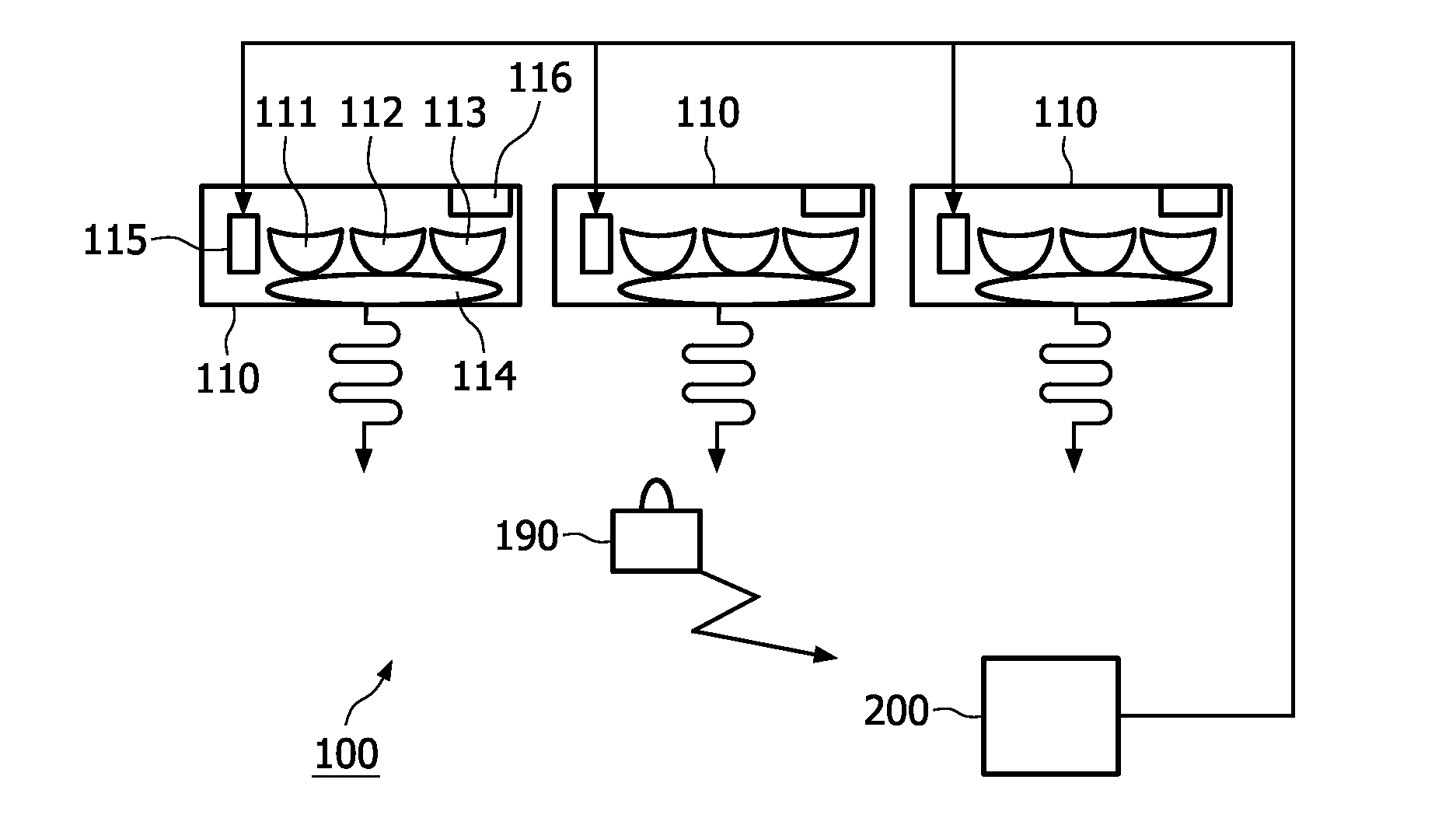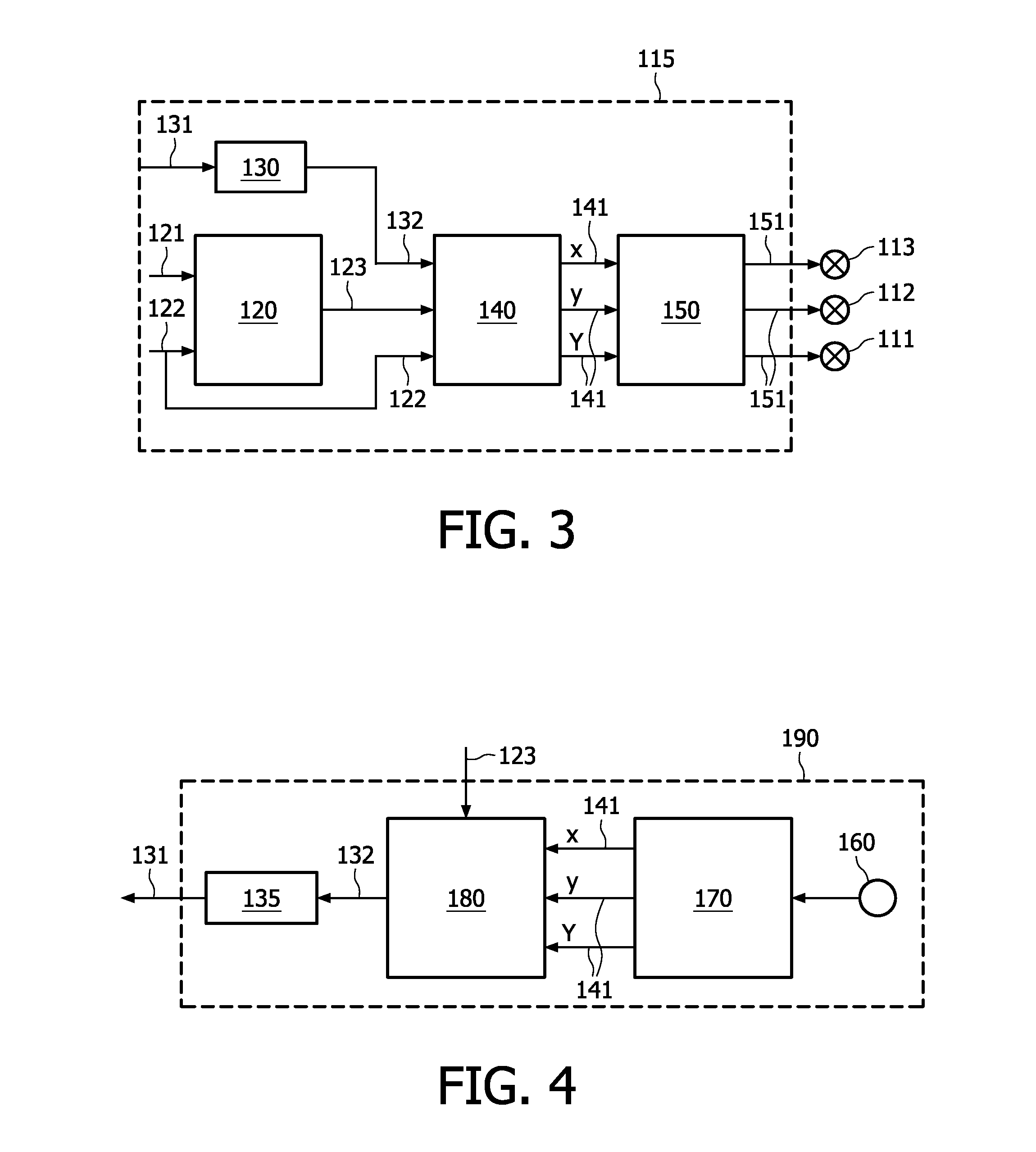Light module, illumination system and method incorporating data in light emitted
a technology of illumination system and light module, which is applied in the direction of electric variable regulation, process and machine control, instruments, etc., can solve the problems of reducing the primary function of the system as an aid to human, the eye is very sensitive to intensity variations, etc., and achieves the effect of maximizing the detectability of a sensing device and minimizing the visibility of color coordinate modulation
- Summary
- Abstract
- Description
- Claims
- Application Information
AI Technical Summary
Benefits of technology
Problems solved by technology
Method used
Image
Examples
Embodiment Construction
[0020]FIG. 1 shows an illumination system 100 according to the invention. The system comprises a plurality of light modules 110. Each module comprises at least two primary light sources 111,112,113 capable of emitting a primary color light enabling the light module to emit combined light having intensity (Y) and color coordinates (xy) through mixing the primary color light emitted by the light sources using appropriate mixing optics 114. The light sources can in principle be of any type, such as gas discharge bulbs, inorganic light emitting diodes (LEDs), organic LEDs, and laser diodes. Thus, as an example a light module 110 may comprise three primary color light sources 111,112,113 emitting red, green, and blue light, respectively. Alternatively, the light modules might comprise more than three light sources, such as a fourth amber LED. Alternatively yet, the light modules 110 may even comprise a (fifth) phosphor-coated LED emitting a broadband predefined spectrum such as white lig...
PUM
 Login to View More
Login to View More Abstract
Description
Claims
Application Information
 Login to View More
Login to View More - R&D
- Intellectual Property
- Life Sciences
- Materials
- Tech Scout
- Unparalleled Data Quality
- Higher Quality Content
- 60% Fewer Hallucinations
Browse by: Latest US Patents, China's latest patents, Technical Efficacy Thesaurus, Application Domain, Technology Topic, Popular Technical Reports.
© 2025 PatSnap. All rights reserved.Legal|Privacy policy|Modern Slavery Act Transparency Statement|Sitemap|About US| Contact US: help@patsnap.com



